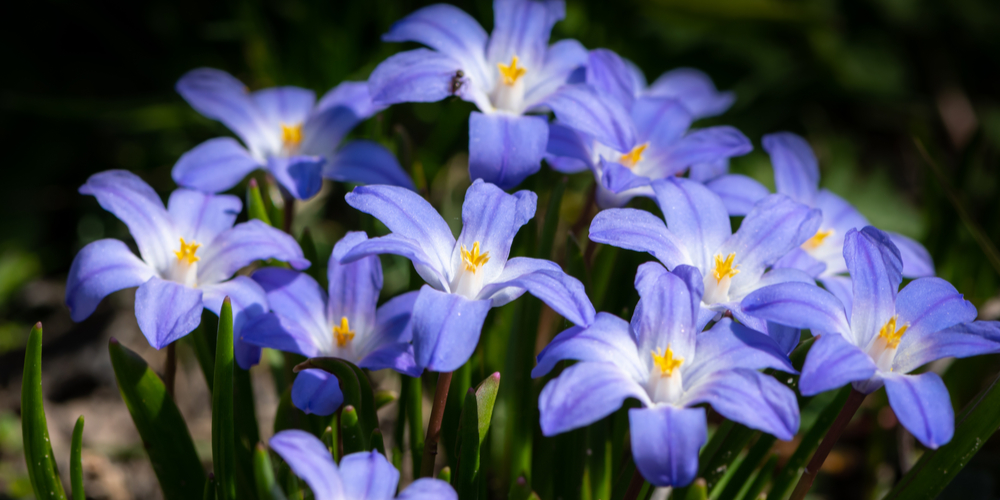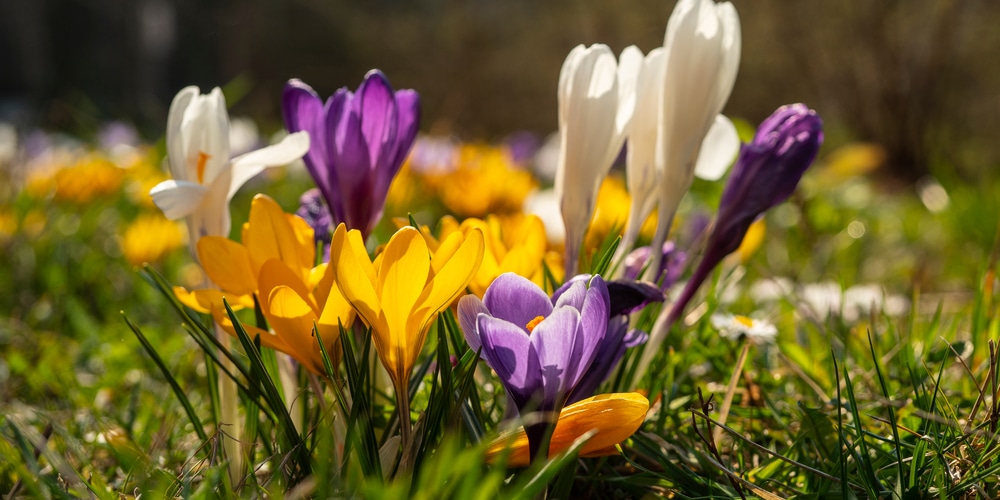March balances between the escape from winter and the coming of the spring period. Every March we are filled with optimism, looking forward to the sunny days that will follow. Spring is the season when the birds’ chirp and the flowers bloom. In the following lines, you will find a list of bulbs, you can plant in March in the US.
4 Bulbs To Plant In March
Chionodoxa
Chionodoxa is a perennial bulbous plant whose stems reach a height of 12 cm, while in rare cases they grow up to 15 cm. This plant is hardy in winter and gives its flowers early in spring. Its inflorescences are solitary, and they have 5-6 petals. We can find different colors, blue, light purple, pink and white, depending on the variety and species.
Chionodoxa is a plant that endures the winter, while when planted and cared for properly, it blooms outdoors. The soil should be loose and nutritious, as well as well-drained.
After flowering, the plant forms bulbous lobes, which can be separated to produce two independent flowers. After flowering, it forms capsules with seeds. The bulbs are elongated and ovoid. The roots fall after one year of flowering and the bulbs germinate for 2 consecutive years.
Hyacinth
Hyacinth is a plant, whose beauty and aroma are mythical. That is a bulbous plant native to the Mediterranean countries. It blooms for about 2 months from February to March-April, but to synchronize it this way you have to plant its bulbs early in September. Its flowers are found in many colors such as white, yellow, pink, lilac, fuchsia, blue and purple. Hyacinth loves the cold, so it blooms this season and dries in summer.
This plant does not need much sun whenever you may plant it under trees if needed. It has roots at the bottom and a bud at the top that will germinate and give you the flower.
So for the bulb to grow, it needs light soil so that it does not receive pressure. You will also need sandy soil, rich in organic matter with very good drainage so that it does not rot. Whether you plant it directly in the ground or a pot, such a mixture will give you the right results.
Daffodil
Daffodil is an impressive bulbous flower that is planted in fall and gives its special flowers in spring. This plant is characterized by beautiful flowers that look like a trumpet, which emerges through the oblong leaves. You may admire it in different colors; from white, white-yellow, yellow-orange, reddish to pink.
Daffodil is planted in rock gardens, in garden partitions, and even as an indoor plant, and is among the most popular flowers for vase decoration, during the winter. This impressive plant grows very easily in almost all types of soils but prefers well-drained soils. It needs a sunny or semi-shady environment to thrive, while in the shade it does not bloom.
Sunny places have the advantage compared to the semi-shady ones, as, after flowering, the sunshine contributes to the bloom of the next year. To plant the daffodil in a pot, we use general-purpose topsoil and ensure good drainage, drilling holes in the bottom of the pot to drain the water along with a layer of gravel at its base.
Crocus
Crocus is a beautiful flower with bright colors that we often find in parks and gardens. It is planted mainly in autumn and flowers in early spring. Crocus is a low-growing plant that reaches a height of 10 to 20 cm, has foliage reminiscent of grass and impressive flowers in a cup-shaped shape and a variety of colors: yellow, white, pink, purple, gold and we will find two-tone varieties. It is an excellent choice for planting in flower beds between ornamental shrubs and trees, while it can also be planted in a pot on the balcony.
The plant thrives in fertile and drained soils that do not hold water. In conditions of excessive humidity, the bulb rots. We prefer to plant it in sunny places to ensure rich flowering.
A special feature of the crocus is that its flowers close during the night and when cloudy days prevail. In terms of fertilization, during planting, you may add compost and manure to the place where the plant is placed, while adding gradually complete granular fertilizer.
Related Article: How Deep to Plant Crocus Bulbs?



